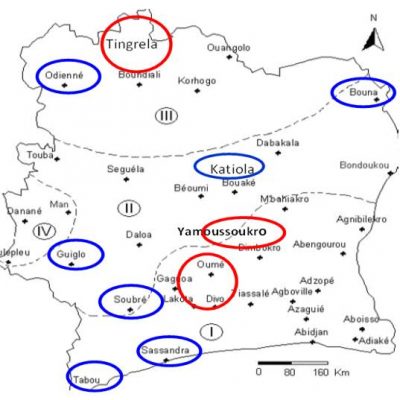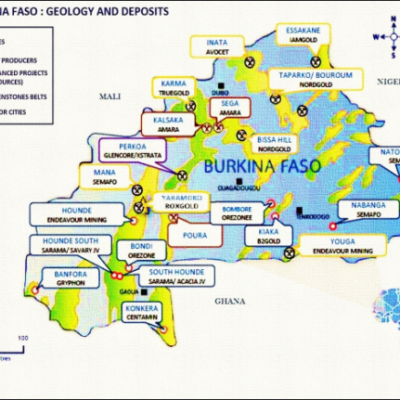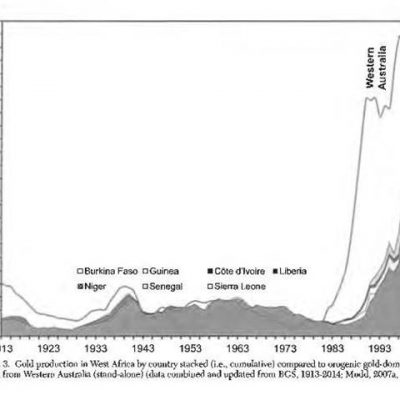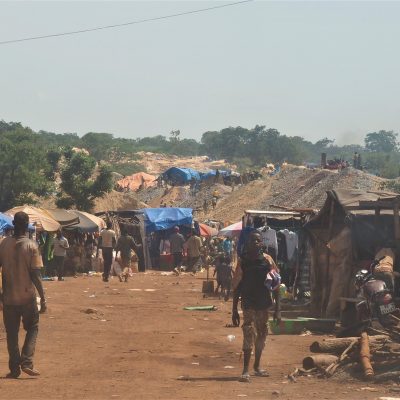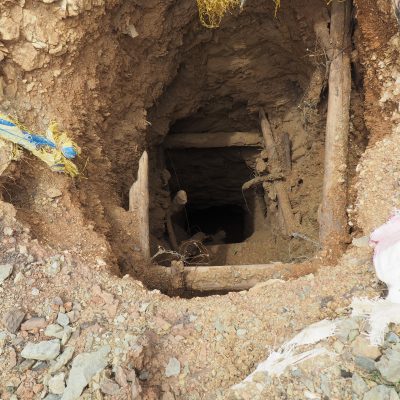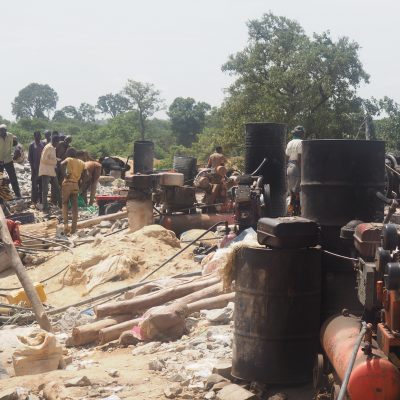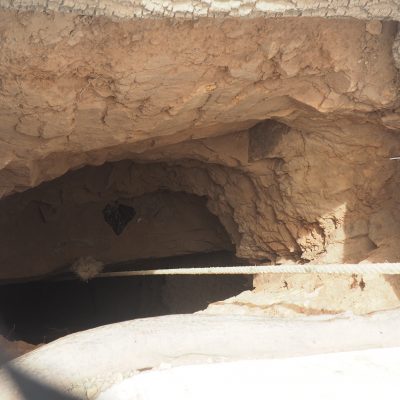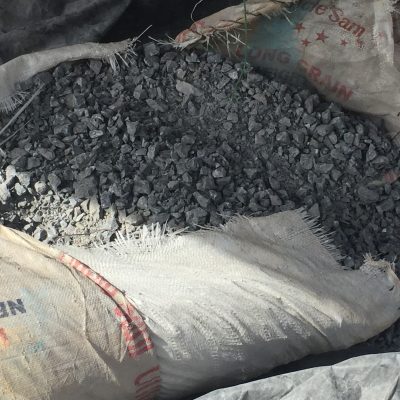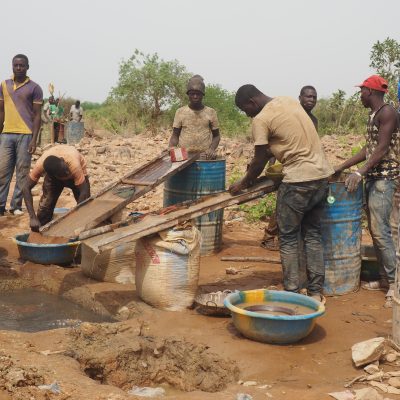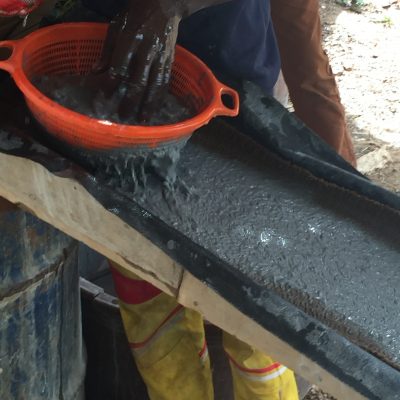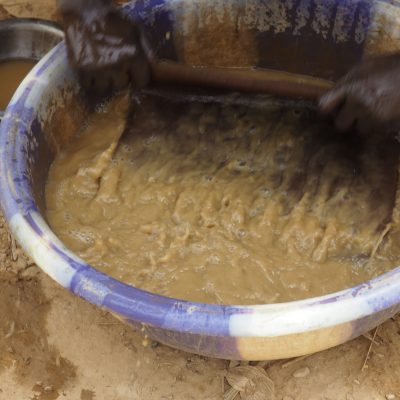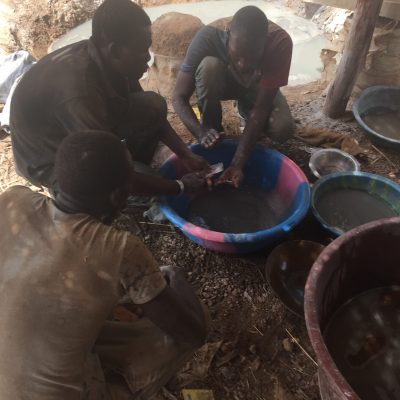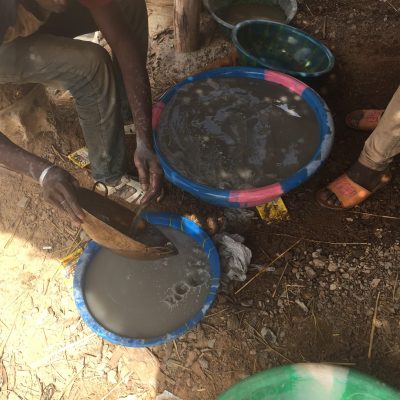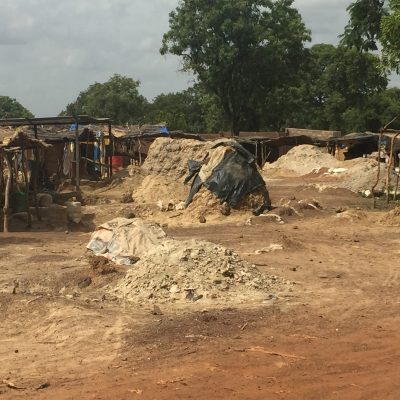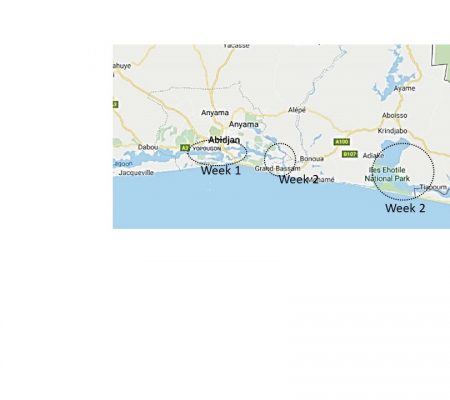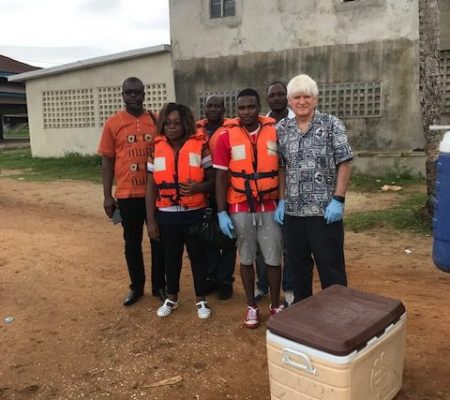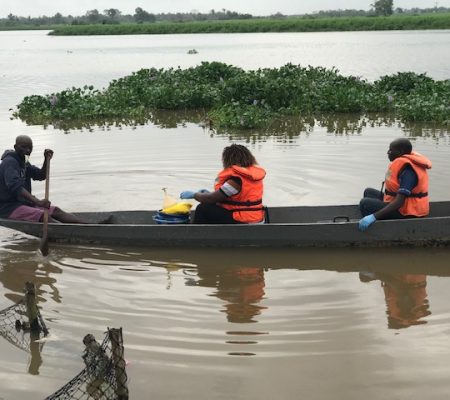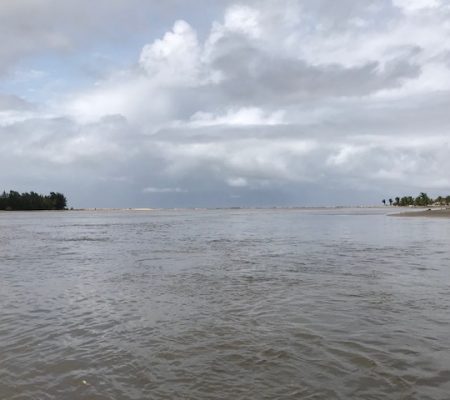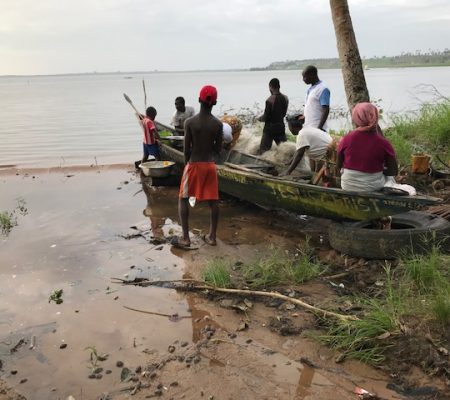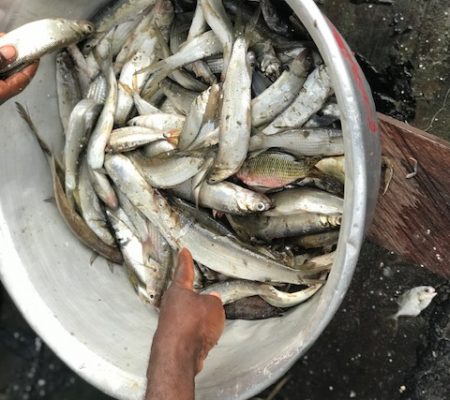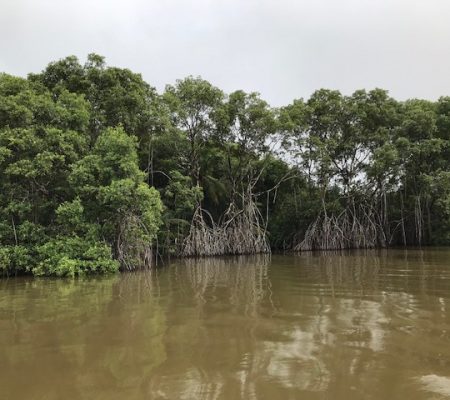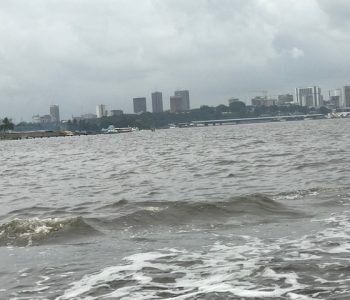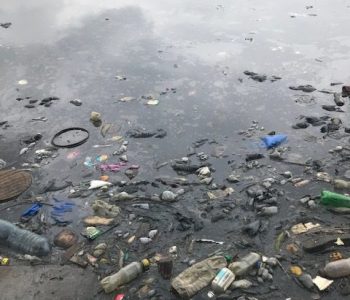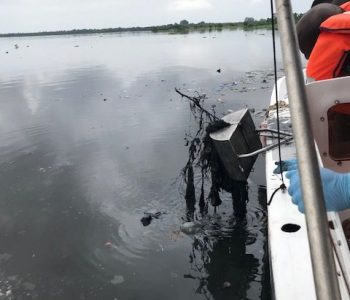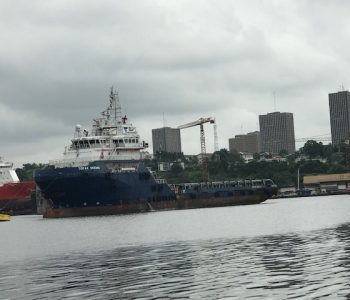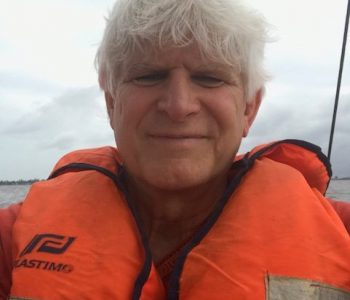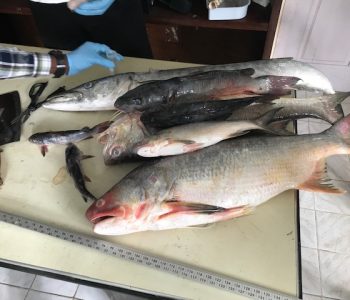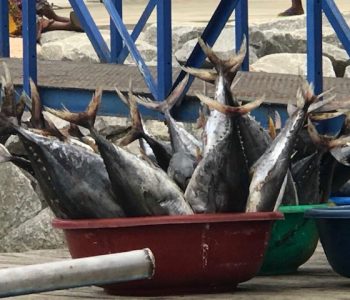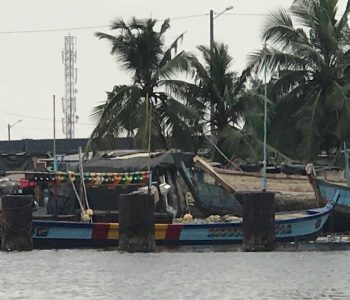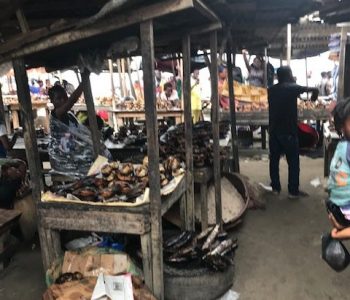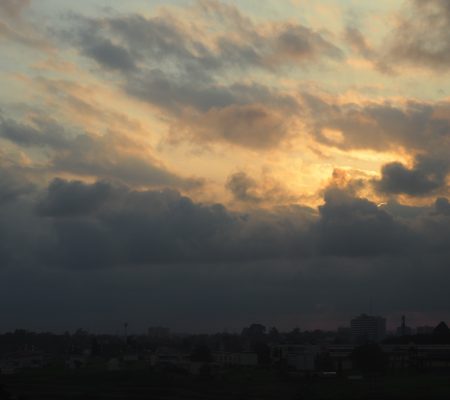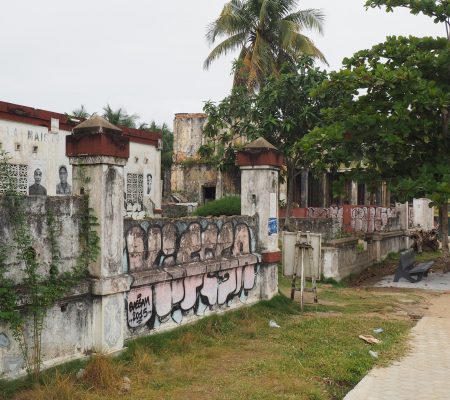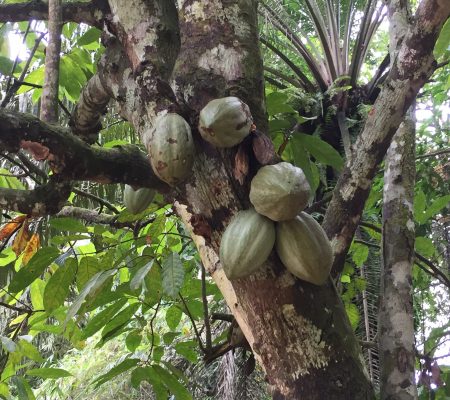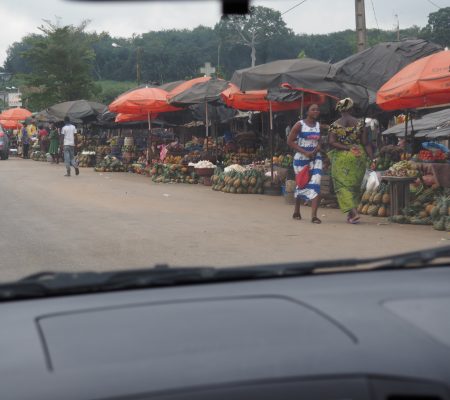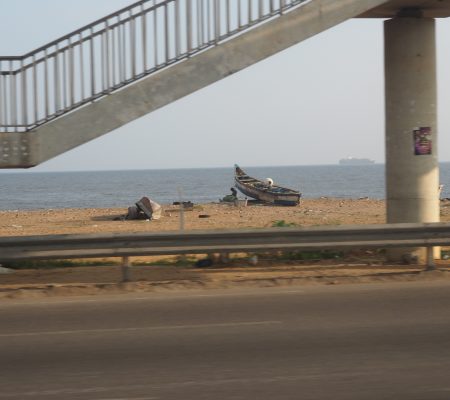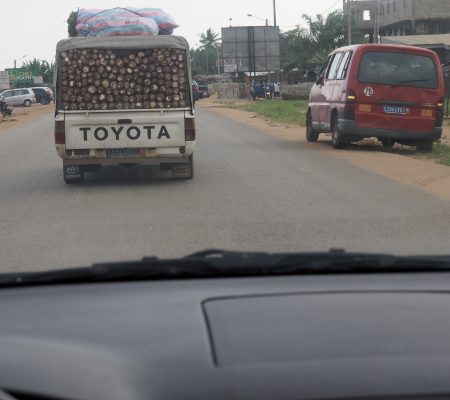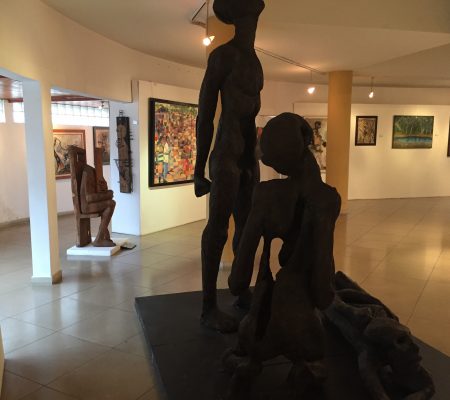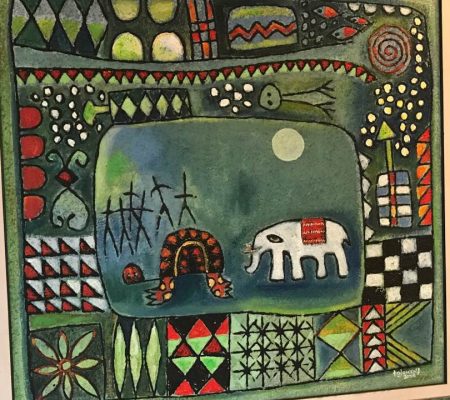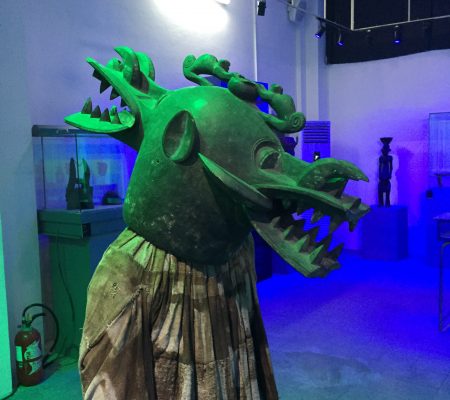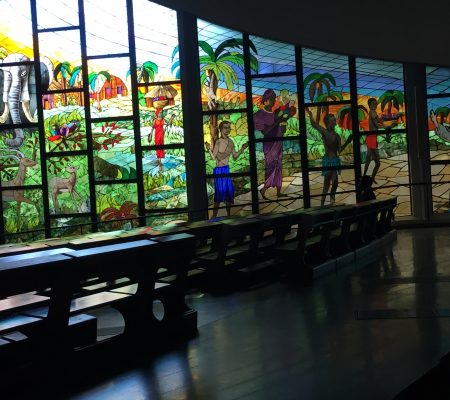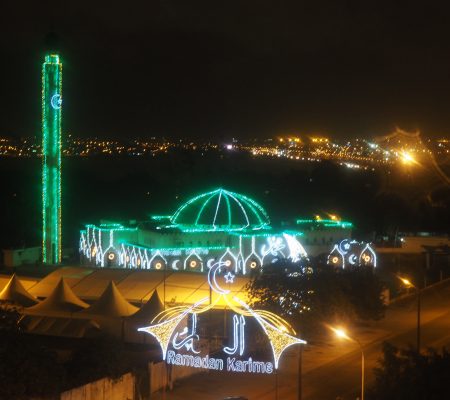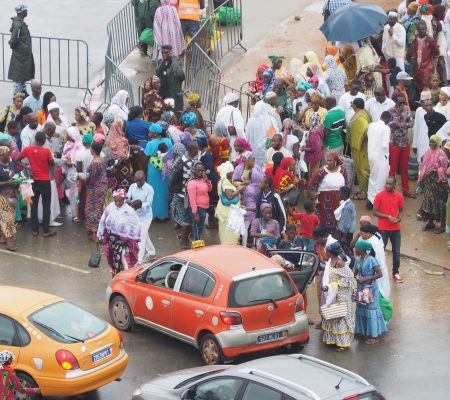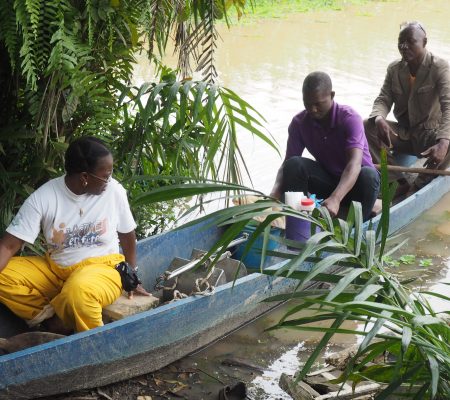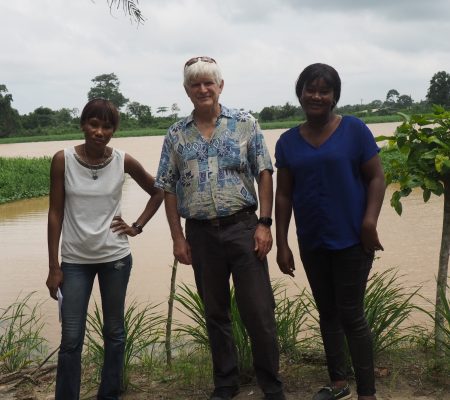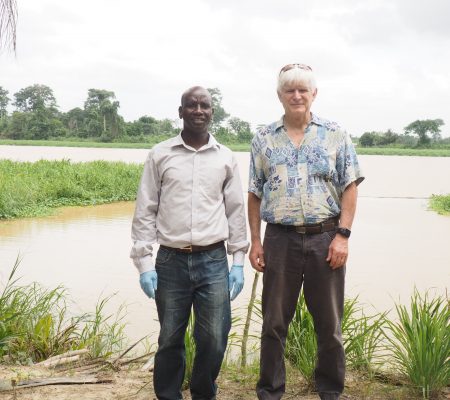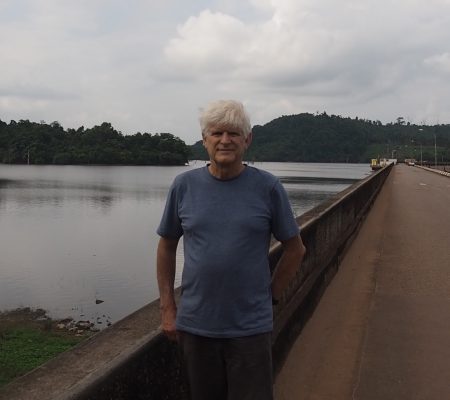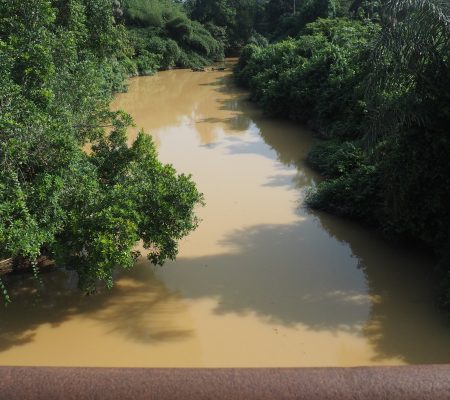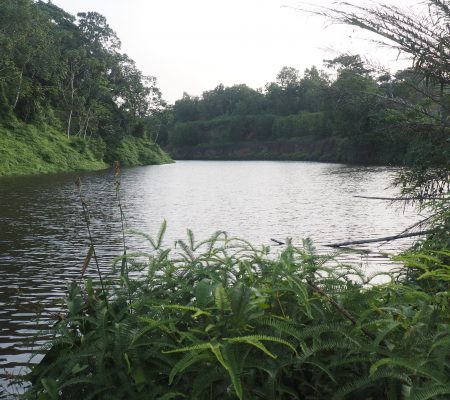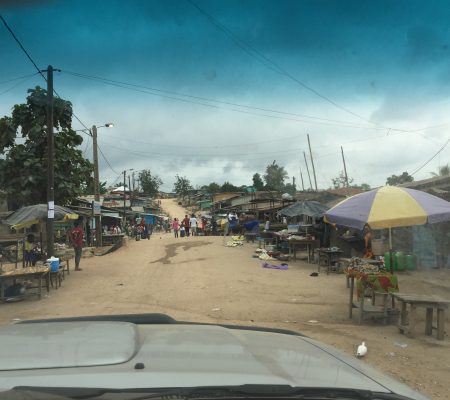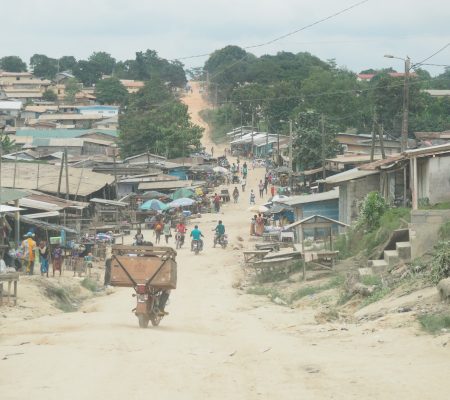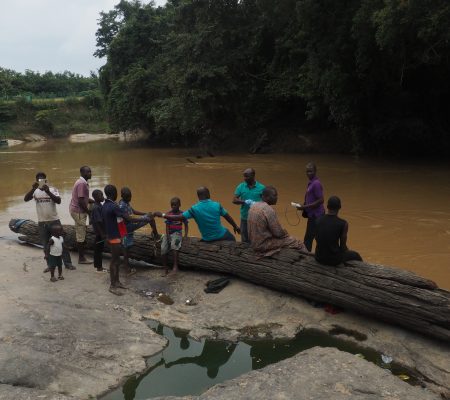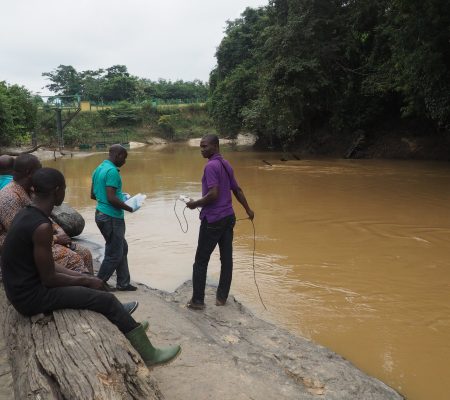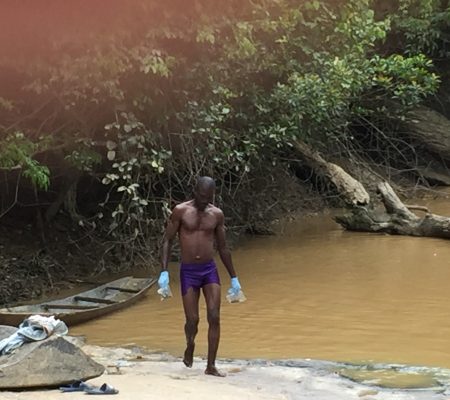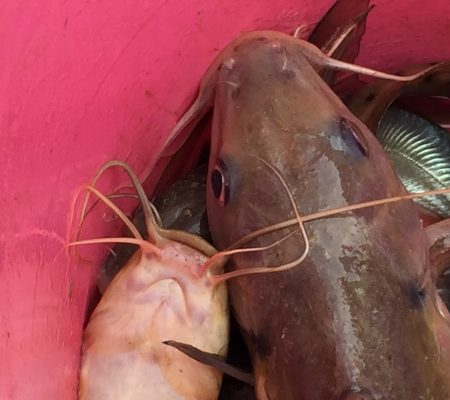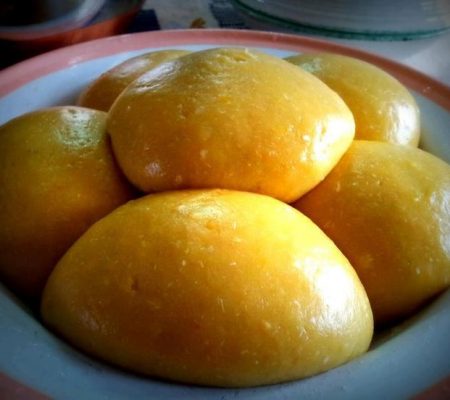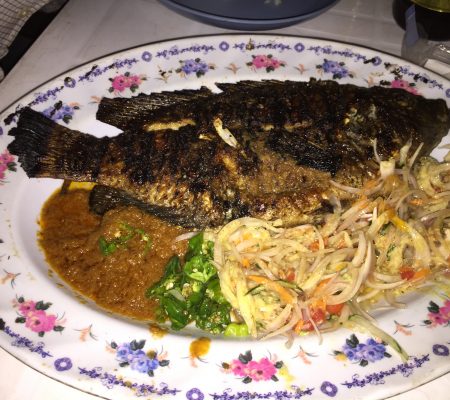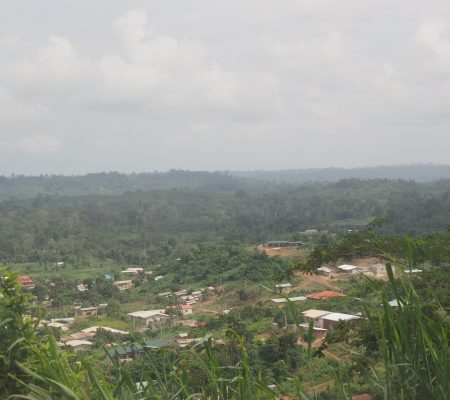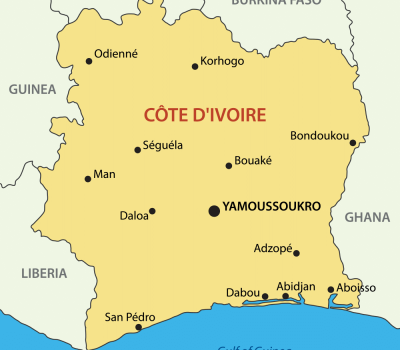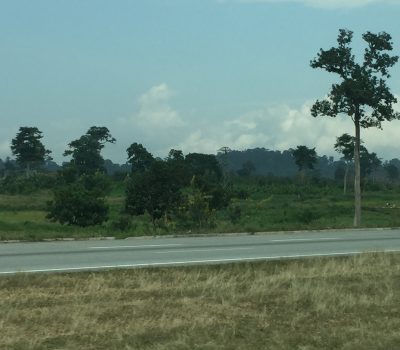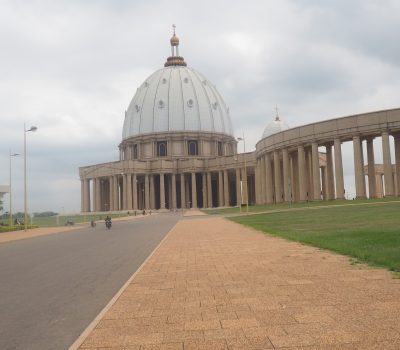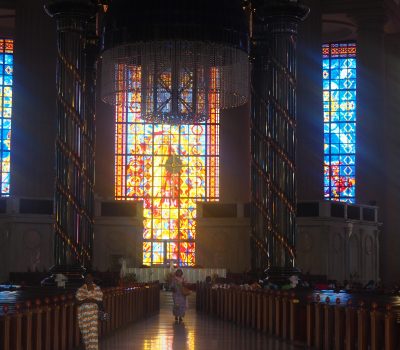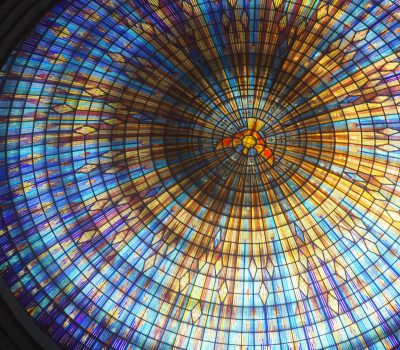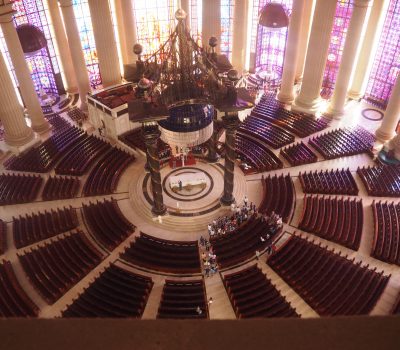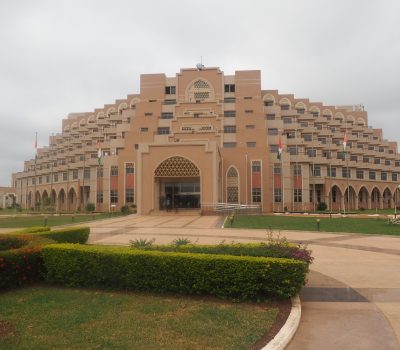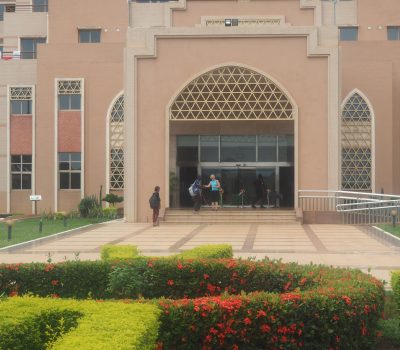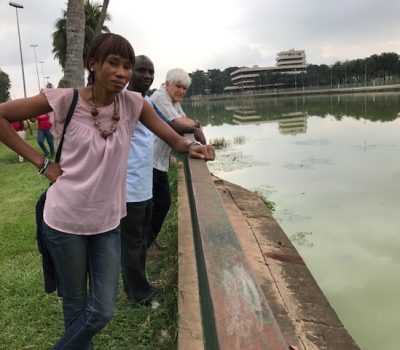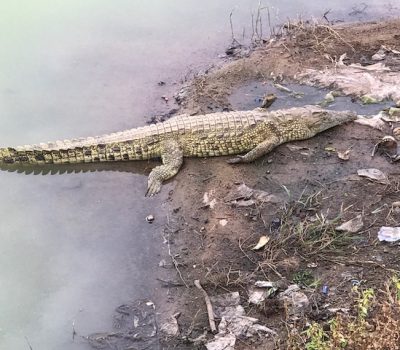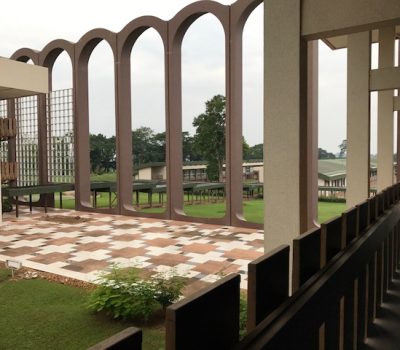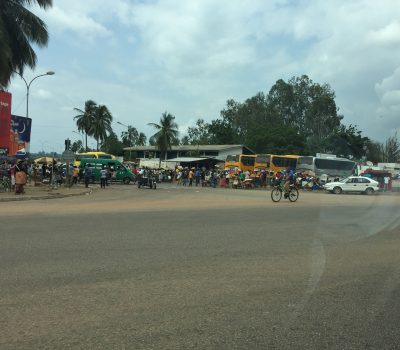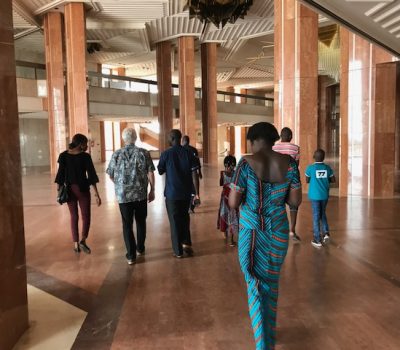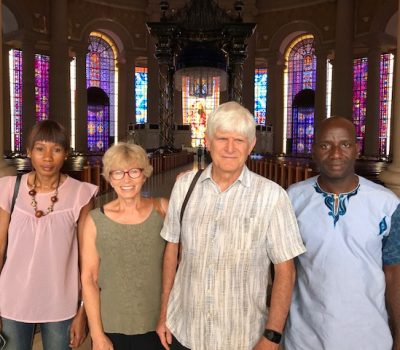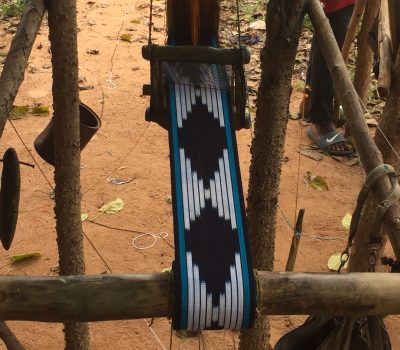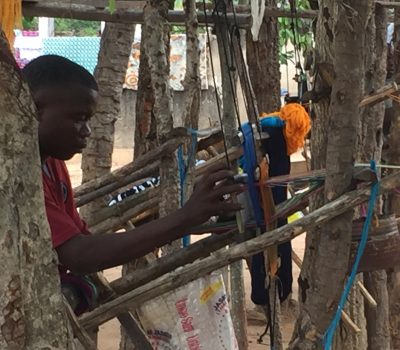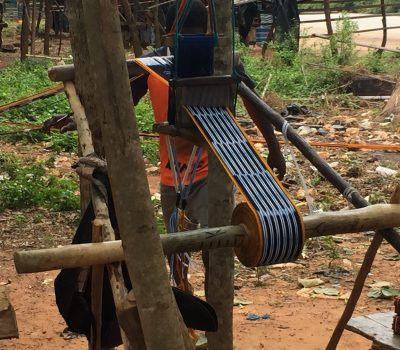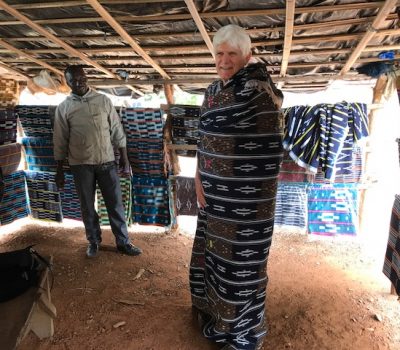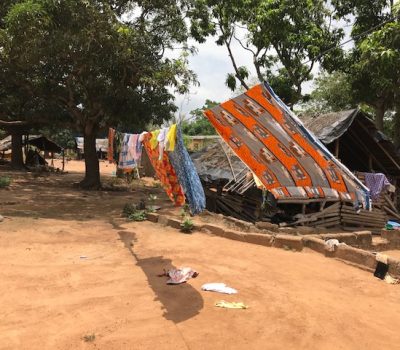Overview
The research in West Africa is funded by a Fulbright award that has allowed for three trips to two countries in the region: Cote d’Ivoire, because of my previous contacts with Drs Mariame Coulibaly and Koffi Marcellin Yoa, and neighboring Burkina Faso. Gold mining is an important economic activity in West Africa, both commercial scale and small-scale/artisanal activities (ASGM), and has been for many centuries. While there are established commercial mines in both countries, there is also substantial ASGM activity. In terms of production, Burkina Faso is the fourth largest gold producer in Africa, behind South Africa (highest), Ghana and Mali. Cote d’Ivoire and other West Africa countries are also major contributors. The Fulbright Flex Scholar Program award is to study the impacts of ASGM, using mercury (Hg) for gold (Au) extraction, on the local waters, and the impact this has on the levels of methylmercury (MeHg) in fish and other organisms in the rivers and reservoirs of both countries, and the coastal waters of Cote d’Ivoire. People in West Africa eat more fish than in other locations and it is an important source of protein. The focus of the research is on the fresh waters and the potential for human exposure.
In Burkina Faso, most of the ASGM mining involves the extraction of subsurface rock from mining shafts 10 m or more deep while in Cote d’Ivoire the mining involves surface wide pits in soil in most locations, and retrieval of sediment from rivers. For further processing and gold extraction in Burkina Faso, the rock needs to be pulverized and ground into a fine powder and in Burkina Faso this is done both manually and using crushers that are able to grind small pebbles. The ground rock powder or soil collected in both countries is then “sluiced” with water as a primary separation. Often the rock mining/soil collection and the sluicing/mercury extraction were done at different locations. The Au-bearing particles are heavier than the surrounding rock/soil and so washing a slurry down a sluice lined with matting with water leads to the aggregation of the heavier particles in the matting. This – the so-called “concentrate” – is then washed into a secondary container and the process repeated. Once sufficient material is obtained, there may be further concentration of the material using panning, and the evidence for the presence of Au can be seen. Mercury is added to the concentrate and after amalgamation, the Hg-Au amalgam is separated from the remaining material. The amalgam is burnt to release the Hg and leave the gold behind – I did not see the burning process but witnessed most of the other steps in the process in Burkina Faso.
Trip Three
I arrived back in Cote d’Ivoire on June 21, 2019 for the final visit of the project. The aim of the studies this year is the sampling of the lagoons and coastal waters of Cote d’Ivoire, which are both impacted by urban/industrial activity, and by rivers inputs from upstream Au-mining regions. The coastal region has a large marine fisheries with three species of tuna being harvested as well as other piscivorous or smaller fish. I am mainly collaborating with colleagues at the Centre Research Oceanologiques (CRO), specifically Koffi Marcellin Yao. We will be doing field sampling but also obtaining fish samples from other research groups that are focusing on the fish ecology and biological resources of the region.
In the second week, we travelled east of Abidjan to sample the lagoon/river system around Grand Bassam – the Comoe River flows into the end of the Ebrie lagoon – and also the separate large lagoon system in the east near the border with Ghana. We stayed in Adiake and sampled the water with the help of locals, from whom we hired a boat and who helped us collect locally-caught fish for analysis. We collected water and sediment in both locations with a total of 8 locations.
The field trip during the first week here was around the city of Abidjan, which is surrounded by the lagoon Ebrie, an extensive water body – 130 km long, and 4 km wide and 5 m deep, on average. We sampled both the polluted and more pristine parts of the lagoon around the city, and will sample locations further from the city in the coming weeks. We also visited a fish market and purchased fish caught from the lagoon for analysis – barracuda, capitan, and catfish. We are travelling east the first week of July to sample waters around Grand Bassam and also the lagoon on the border with Ghana, north of Assinnie.
Trip Two
I traveled to Ouagadougou on May 8, 2018 and arrived the next day. The first two weeks were involved with setting up and planning the trips. I returned from Burkina Faso on June 18. The Burkina Faso trip consisted of two one-week long expeditions with the help of a technician Christophe from the Ministry of Mines, who made the necessary contacts to get us to the villages and mining areas that were remote from paved roads and cities. Certainly we would not have found the locations without his help, nor been able to convince the miners to let us sample the various stages in the process. Many of the sites required hours of travel along dirt tracks into the remote bush. A grad student Rodrigue from Prof Boubie Guel’s group also came along on the trips. The first trip was to the southwest of the country and we stayed in Gaoua and went out each day sampling in the region, visiting “villages” that are located around mining activity. We visited 4 mining sites and sampled a river and reservoir in the region. The second trip was north of Ouagadougou and we were based in Kaya and sampled in all directions around the city, visiting more sites and collecting both river and reservoir samples. There was little fish seen during the trips as many of the mining sites were remote from rivers, and used groundwater for the mining activities. It was also the end of the dry season in Burkina Faso and the water levels were very low in many locations. Samples at the mining sites were collected at all stages of the process and it is hoped that this will allow for a mass balance estimation of the Hg used and lost during the Au extraction. While most ASGM locations used Hg amalgamation for Au extraction, one location had open pits where they were using a crude cyanide extraction processes, using zinc metal as the mechanism for reprecipitating the Au from the cyanide solution. Overall, the conditions and approaches used in Burkina Faso were very different from those used in Cote d’Ivoire.
Trip One
The Cote d’Ivoire trip began on Thursday, July 27, 2017 when I flew with my wife from Boston, with two large scientific boxes, and our suitcases. We arrived the next day in Abidjan, and the fun began. Below is the writings completed during that trip. Since returning from Cote d’Ivoire the samples of water, sediment and fish have been analyzed for total and MeHg, and a paper is has been written on the results and findings of this expedition, and published in Science of the Total Environment.
From August, 2017……We are staying in an apartment in the Rivera Golf area of Abidjan, with a mosque across the street and not far from the estuary that envelops the city. We were soon saying the phrase that I have since repeated many times “Je parle un petit peu Francais.” Sad but true, and this exaggerates my ability to actually express myself in French. We were unprepared to speak French as we had understood we could get by without speaking competent French, which is barely true. We’ve experienced this before, going to a French country without having done our homework, but hoping we would remember something from the previous time; when in actuality my sabbatical in France was 15 years ago! So, each day, when we can, we are doing audio French classes and are making slow progress.
Nina arrived for a short visit over the weekend from Kinshasa on her way to spending her last few months in the DRC in Goma, and she acted as our translator for a few days. We visited Grand Bassam and Assinie, two beach locations east of Abidjan. Grand Bassam was the former French colonial capital which dates from the late 1800’s, parts of which are now being protected as a UNESCO World Heritage site. We walked around and looked at some very impressive arts and crafts and had lunch in Assinie on the lagoon. We are not driving here as roads are a little too hectic to say the least, so we commission a driver to take us when needed, or we catch a taxi. Essential phrases to learn were ones for negotiating with the taxi driver. Combien? We always pay too much. Soon Nina was gone again, and the work truly began.
One of the first rivers to be sampled was the Comoe, which enters the lagoon near Grand Bassam. I am working here closely with Dr. Mariame Coulibaly, who did a Fulbright for a year in my lab in Connecticut, and Dr. Koffi Marcellin Yao, who I met a few years ago when he was on a Fulbright Scholarship at Woods Hole with Carl Lamborg. I immediately realized that without them, I would be truly lost, and they have been very helpful and patient with my lack of French. To begin, we needed to update our preliminary sampling plan, sort the equipment, find additional supplies like distilled water and acid. Much organization was needed for the first sampling trip to the eastern part of Cote d’Ivoire, which would be the next week. I visited both Mariame and Koffi’s institutes, and met many people, especially those who were potentially helping us with our study. As the week ended, we were getting there. After the next Monday, Independence Day in Cote d’Ivoire, the work was about to begin.
Joan and I spent the weekend visiting an art gallery and a museum, and walking around the main part of the city, Plateau, and exploring our neighborhood, getting to know the area and settling in. We visited an iconic modern Catholic cathedral as well. About 40% of the population is Muslim, about a third is Christian. There has been much activity around the mosque and this is because people are preparing for a pilgrimage to Mecca. The first president after independence, Felix Houphouet-Biogny, ruled for a long time and had great visions for his legacy and what he wanted to build. In the next few weeks we’ll see many of these grand structures that sharply contrast with the potholed roads, the many poor people and the crumbling infrastructure here. I will touch more on the history in a later posting.
To be continued….
Week Two – Science
On Wednesday we loaded up two vehicles with equipment and supplies – Prof Alfred Yao’s SUV with things from UConn/Mariame’s lab and a truck from the Centre de Recherches Oceanologiques (CRO) with equipment from there. We were a big group for this first sampling trip. Dr Yao came along to help with sampling and because he knew the people we were to meet with in Abiosso and around, and the sampling locations. The group from CRO included Koffi, Dr. Mayse Aka, a plankton ecologist who was to help us ascertain if we could collect zooplankton, Dr. Safiatou Coulibaly, Mariame’s sister, who is a fish biologist at CRO to help with fish collection and identification, a technician, Kone Kanakounou, and the driver. Mostly, before sampling, we needed to first visit with the local officials to inform them of our project and confirm our permission to take samples. We stopped outside of Bonoua, about an hour east of Abidjan, to meet with locals and talk about the best sampling location, and found a location to sample from where local fisher people were living on the water’s edge. We sampled using their small boat, and Drs. Yao, Aka and Kone were the sampling team in the boat. We were collecting water, sediments and hopefully biota for mercury speciation analysis, and ancillary variables (water quality, DOC, chlorophyll, nutrients). At this site, we made our first attempt at collecting zooplankton even though the water clearly had a high sediment load. The river sampling went smoothly but we were unable to obtain any fish samples from this location. We were soon on our way to Abiosso, an hour by car, and the other sampling sites.
In Abiosso, we met with the Regional Council President in his office and he invited us back to his house for lunch which consisted of a spicy stew of fish served with foutou, a side dish made with cooked plantain pounded with palm oil, and rice, and a little bordeaux. Delicious local food. After lunch, the photo was taken with all of us – from left: a council member, Dr. Yao, Safi, Mariame, Kone, president A. Aka, Koffi, me, Dr. Aka and our guide for sampling on the right. We set out and stopped on the road after crossing the Eholie River to sample there as it is known that artisanal mining occurs upstream. This river flows into the Abi Lagoon and could be transporting mercury to the coastal waters. We then drove on to the final sampling site of the day, in the vicinity of an abandoned commercial gold mining operation, which required a relatively long haul on dirt roads to near the Ghana border east of Abiosso. Anyway, this was good preparation for the next day as we had to travel much further for the next sampling location. At both sites, our activities soon drew a group of onlookers and they helped with the collection of samples as the locations were not very accessible and there were no boats. A pair of gloves and a quick training and they were very helpful in collecting sediment. Again, there were no locally caught fish so one of our endeavors the next day was to definitely find fish and maybe other aquatic organisms for analysis. We arrived back in Abiosso in the late evening and Drs. Yao and Aka returned to Abidjan. The rest of us had a good meal of poisson braise with atticke, made from cassava, at an outside barbecue in the town center – not fancy but delicious. We ate with our hands, but water was provided to properly wash before and after eating. After that, there were water samples to filter, which we did back at the hotel, and it was a late night before they were all done.
This didnt prevent an early start and we were on our way to Bianouan early, which was 80 km away. Firstly, we were on a fairly well-worn, potholed paved road which became a dirt road after crossing the reservoir wall at Ayame, and got smaller and more rutted with distance. We stopped before the reservoir to purchase crustaceans from a local fisherman for analysis. It was a slow drive to the sampling site through changing countryside, rolling hills, and bursts of agriculture – palms for wine and oil, rubber, bananas, cassava – within the surrounding forest, and many villages. Tres interesant. While passing through Kelesso, Mariame saw a colleague she knew and we stopped to chat. He invited us back after sampling for lunch, which was similar to that we had had the day before, and delicious. Again, we met with the local council and were taken to the sampling site. There is much concern as the river water is no longer suitable for drinking and this is mainly due to gold mining activities upriver in Ghana, and mercury is clearly not the only issue of concern. The river used to be clear, and now is very muddy. A crowd soon developed, including the local chief, and there was a jolly mood as we collected samples, again with help from the locals, who provided local fish for analysis, which included three different species of catfish and a species of spiny eel fish. These fish are eaten locally. After that we drove back to Abidjan arriving in the late afternoon, and Mariame and Koffi filtered water samples and stored all in the fridge or freezer for later processing. A successful first outing – much learned and we needed to reflect on what worked well and what did not, and adapt. The plankton sampling resulted in only 5 organisms and so we decided the conditions at most sites would be too challenging for these collections.
Week Two – Yamoussoukro
On Saturday morning, Mariame, Koffi and our driver, Mr Assi, arrived to pick us up for a trip to Yomoussoukro, about 2-3 hours north depending on the traffic. It is ostensibly the capital of Cote d’Ivoire, but this is in name only. The first president, Felix H-B decided to make his home village of traditional houses and little infrastructure into the capital and started his grand design in 1965 by laying out a city with wide roads (3 lanes in each direction) and built a presidential place and other fine buildings. Given the cramped potholed roads and traffic jams of Abidjan, it is hard to comprehend the lack of traffic in this city, which is relatively empty by comparison. To appreciate the grandeur of vision and H-B’s desire for legacy, we first visited the Basilique de Notre Dame de la Paix, which is apparently the largest basilica in the world, dwarfing Notre Dame in Paris and St Peters in Rome, and was consecrated in 1990, during the waning years of H-B’s reign. It is indeed impressive and an informative guide gave us a great tour which included climbing many stairs in one of the internal pillars to get outside to the base of the dome – the elevator was not working. The basilica and its outside standing areas could house 20 thousand for a ceremony within all its walls, apparently. Also, it is noted that H-B funded the basilica’s construction with his own money, but I wondered how did he become so rich? Around the basilica and the nearby presidential palace are ponds with sacred crocodiles that are also part of the grand scheme and legacy. We walked by. We also visited an engineering university in town, and then it was time for dinner. Good food was easy to find and we sampled grilled fish, crevettes, kebabs and salads during the weekend. The avocados in CdI are the big green variety and they are truly delicious.
The Hotel des Parlimentaires where we stayed was out on the outskirts of town, and suggested that H-B’s vision of its extent is still materializing. A paved road turned to a rutted dirt road as we approached the impressive building standing out from the surrounding fields, with few houses or construction nearby. This is the first street light adorned dirt road I have been on. All part of a magnificent vision.
Sunday we visited the Foundation Houphouet-Boigny de la Paix which is an peace institute he built within the city and which has played an important role in mediating regional and African conflicts, according to our guide. it was completed in 1987 with taxpayer’s money. It is an impressive building with lots of Italian marble and grandeur. There was an extensive array of photographs of visiting dignitaries, including many Americans, a grand statue of H-B, and evidence of the institute’s involvement in UN and other peace-keeping missions. There are many large halls for conferences and related activities.
On leaving Yam’kro we detoured north to a Baoule village nearby where traditional woven cloths were being made in a village along the roadside. It was impressive and really amazing to see such beautiful traditional handwoven cloth produced locally, and we walked around the village a little to see al the process. Of course, with Mariame’s help negotiating, we purchased cloth to bring back with us. What an inspiring way to end a great weekend trip. We were back in Abidjan that evening.
There are 4 main ethnic regions in Cote d’Ivoire but overall there are more than 60 ethno-linguistic groups. Mariame and Koffi speak a different traditional language, and French is the main language of communication. Th largest group is the Akan (~42%) who are mostly within the east and center of the country. The Baoule are the main people within this group. The Mandes are the group in the north, accounting for 27% of the population and are the most complex group with many sub-ethnicities. In the north and east are the Voltaic group (18%) and in the west, the Kru (11% of the population).
